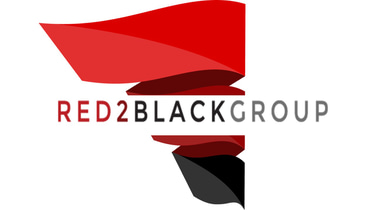How to Build Customer Trust in a Politically Divided World
ow can businesses maintain credibility, authenticity, and trust without alienating key customer segments? Let’s explore actionable strategies to build customer trust in a politically divided world.
SALES PSYCHOLOGY & MINDSETLEADERSHIP & MANAGEMENT
Patrick Mersinger
3/11/20253 min read


To say people have strong opinions on politics in today’s polarized world is an understatement. We live in an era where trust is transactional and politics infiltrates everything—from the products people buy to the brands they boycott. Buyers scrutinize businesses like never before, demanding alignment with their personal beliefs while punishing companies that take the “wrong” stance—or refuse to take one at all.
So, how do salespeople navigate this minefield? Is neutrality even an option? Should organizations or salespeople take a stand or stay silent? Let’s break down the uncomfortable truth about trust-building in a politically charged world.
"Staying Neutral" Might Cost You More Than Taking a Stand
Once upon a time, businesses could avoid politics altogether. That time is over. Today, customers expect transparency, accountability, and—whether you like it or not—an opinion.
🔹 Example: Disney faced backlash from both sides when it attempted to remain neutral on Florida’s “Don’t Say Gay” bill. Eventually, pressure forced the company to take a stance, angering different customer segments.
📌 Action Step: If you choose neutrality, be prepared for criticism. If you take a stand, ensure it aligns with your long-term values—not just a trend.
Window Activism Will Destroy Your Credibility
Customers are not stupid. Slapping a rainbow logo on your profile for Pride Month is a hollow gesture. People can tell who is leveraging window activism to get business. Supporting diversity on social media but failing to promote diverse leadership internally?
🔹 Example: Companies like Pepsi have been called out for tone-deaf marketing, such as the infamous Kendall Jenner protest ad, which trivialized real-world activism.
📌 Action Step: If you or your organization aligns with a cause, back it up with real action—donations, policy changes, and consistent advocacy. Otherwise, stay out of it.
People Are Watching Where You Spend Your Money
Customers care less about what you say and more about where your money goes. They analyze supply chains, political donations, and even executive affiliations. One misstep and a viral hashtag could be coming for you. Now, people deal with people, so even though your organization may favor one policy, ensure your clients know if and how it will impact them.
🔹 Example: Many companies faced boycotts when it was revealed they funded political candidates supporting restrictive policies on abortion, voting rights, or climate change.
📌 Action Step: Review where your company donates and invests. If your spending contradicts your marketing, expect backlash.
Social Media Is a War Zone—Tread Carefully
Every company now operates under the constant threat of digital outrage. One wrong tweet, an old controversial post resurfaced, or a misunderstood advertisement can tank your brand overnight.
🔹 Example: Bud Light’s partnership with transgender influencer Dylan Mulvaney sparked a massive boycott from conservative consumers, leading to billions in losses.
📌 Action Step: Before making a public statement, ask: Who benefits from this? Who could be alienated? Is this worth the risk?
Perhaps, For Your Business, It Does Not Matter
Trying to appeal to everyone is a losing game. If you attempt to be everything to everyone, you become nothing to anyone. Sometimes, you need to understand what does not impact their lives on that level. Maybe you just serve chicken sandwiches
🔹 Example: Chick-fil-A was the target of the LBGQ for political fallout, where they tried to boycott them in some cities and tried to block Chick-fil-A locations. Ultimately, everyone decided their chicken sandwich did not represent their beliefs, just hunger. They have continued to grow regardless.
📌 Action Step: Define your core audience. Who do you want to attract and retain? Accept that some customers will leave—and that’s okay.
Final Thoughts: Like it or not, you must be honest and authentic.
Customers expect brands to be transparent, consistent, and accountable. If you choose activism, neutrality, or a middle ground, be prepared for consequences.
✅ If you take a stand, ensure it aligns with your core mission and has long-term backing.
❌ If you try to appease everyone, you’ll likely alienate both sides.
Sales Consultancy
Building Long Term Revenue
Connect now:
© 2025. All rights reserved.
Try our Free Elevator Pitch Tool:
